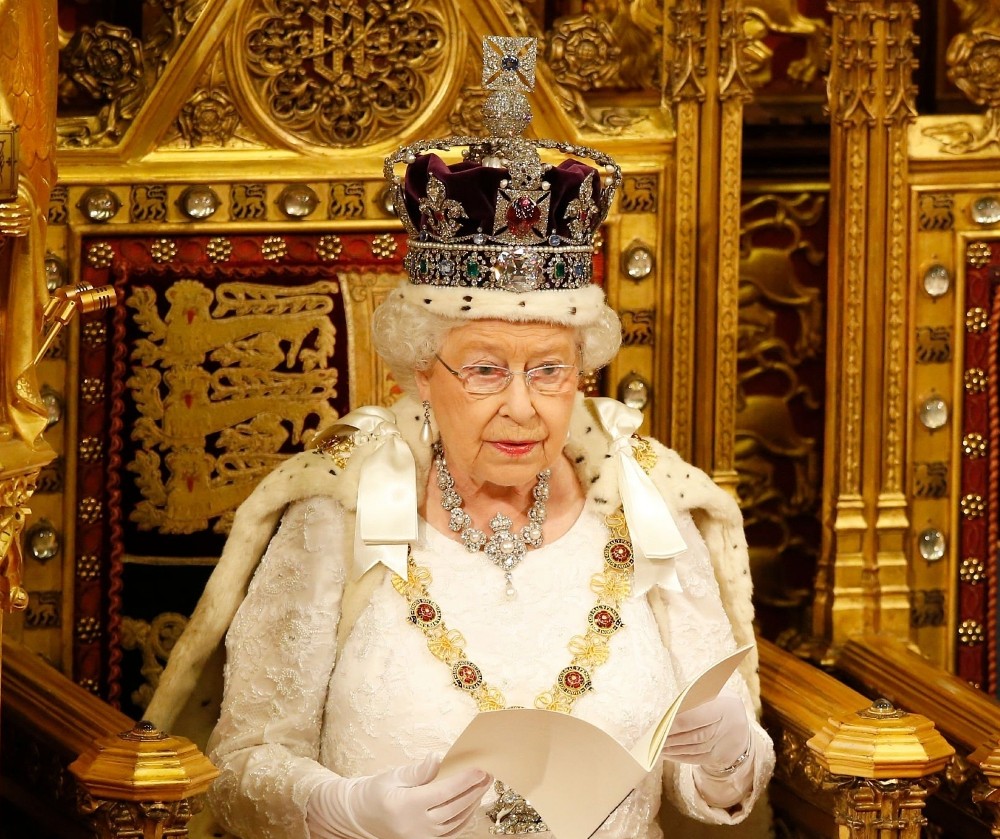KOH-I-NOOR DIAMOND IS A STOLEN GEM

Queen Elizabeth II wearing Royal Crown with stolen Koh-I-Noor diamond.
The most exquisite of all the British Crown Jewels – is the Koh-I-Noor Diamond.
Ruthie DiTucci
And, one of the longest awaited coronations is that of King Charles III. After a lifetime of reigning over the United Kingdom and its realms, Queen Elizabeth II passed away in 2022 and King Charles is now king. The Imperial State crown has a huge diamond called the KOH-I-NOOR Diamond weighing 105.6 carats. That diamond was stolen from a child.
The history of the East India Company’s rule over India is replete with tales of exploitation, violence, and subjugation. One such incident is the infamous case of the company threatening a 10-year-old “boy king” to give up all his authority and hand them the diamond. They did this effectively by incarcerating his mother and holding her against her will in front of his eyes. This event is a stark reminder of the brutal tactics that the company employed to maintain its stranglehold over India.
The incident in question took place in the early 19th century, when the East India Company had already established its supremacy over much of India. At that time, the Sikh empire in the Punjab region was ruled by a young king named Duleep Singh. Duleep Singh was only 10 years old when he ascended the throne, and his mother, Maharani Jind Kaur, was appointed as his regent.
The East India Company saw the Sikh empire as a potential threat to its dominance in India and was determined to subjugate it. In order to achieve this, the company employed a variety of tactics, including diplomacy, bribery, and military force. One of the most egregious of these tactics was the incarceration of Maharani Jind Kaur.
The company knew that Maharani Jind Kaur was a formidable figure who had the support of the Sikh nobility and the people of the Punjab. In order to weaken her position and exert pressure on Duleep Singh, the company had her arrested and imprisoned in a fort in Punjab. The company threatened to keep her imprisoned unless Duleep Singh agreed to cede large parts of his kingdom to the company.
Duleep Singh was only a child and was powerless to resist the might of the East India Company. Under pressure from the company, he agreed to cede large parts of his kingdom, including the valuable Koh-I-Noor diamond, to the company.
The Koh-I-Noor diamond is a stolen diamond that came from India’s alluvial mines thousands of years ago. It was a symbol of the wealth and power of the Sikh empire, and its loss was a significant blow to the pride and prestige of the Sikhs.
The story of the Koh-I-Noor diamond is a tragic one. It was looted by Nader Shah, the Persian ruler, when he invaded Delhi in 1739. The ensuing carnage cost tens of thousands of lives and the depletion of the treasury. The diamond changed hands several times over the next few centuries, with various rulers and conquerors laying claim to it. Eventually, it ended up in the possession of the East India Company, which took it as part of the spoils of war.
The story of the East India Company’s threat to a 10-year-old boy king and the theft of the Koh-I-Noor diamond is a shameful chapter in the history of British colonialism in India.
The event is a reminder of the brutal tactics that were employed to dominate India and extract its wealth. The story of the Koh-I-Noor diamond is also a testament to the resilience and strength of the Indian people, who have endured centuries of colonial exploitation and yet continue to strive for freedom and justice.
Great Britain cannot continue to keep stolen property and claim to be good global citizens. The diamond’s origins and for the British monarchy to continue justifying keeping it (considering the horrid way it was obtained) is beyond selfish and cruel.
The Koh-I-Noor’s history and how it came into the British Monarchy’s hands is evidence that the British Monarchs cannot be depended upon to think reasonably or even equitably over a stolen item. Evidence from all over the world has surfaced that the 105.6 carat diamond was stolen by the East India Company with the express purpose of humiliating India by giving the diamond to Queen Victoria.
Even though the British Monarchy are fully aware of the diamond’s history, they choose to deny the jewel’s history and try to justify the theft.
Fortunately for India’s history, the East India Company was eventually purchased by a businessman from India.
The United Kingdom can rest assured that they will soon face legal demands for the return of the diamond in the same way that the Jewish community began bringing lawsuits against the holders of Jewish assets found throughout banks and museums worldwide.



